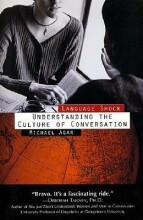Summary: Unity In Super-Diversity
- This + 400k other summaries
- A unique study and practice tool
- Never study anything twice again
- Get the grades you hope for
- 100% sure, 100% understanding
Read the summary and the most important questions on Unity in Super-diversity
-
1 Introduction
This is a preview. There are 3 more flashcards available for chapter 1
Show more cards here -
What is the aim of this paper?
To give insight into how members manage cultural and linguistic differences in interaction, and how this enables them to achieve unity in diversity. -
What is the notion of European capacity?
This denotes the ability to manage differences and multiple identities in interaction. It emphasises how communicative competencies allow interlocutors to successfully operate in European multicultural and multilingual groups. -
What happens when individuals with prolonged and cumulative intercultural experiences undergo an intercultural evolution characterised by a continuous process of deculturation and acculturation?
Individuals leave old customs behind and integrate elements from other cultures into a dynamic and situational applied idendity. -
2 Erasmus generation 2.0 and European Capacity
This is a preview. There are 2 more flashcards available for chapter 2
Show more cards here -
What does the term Erasmus generation refer to?
Participants in the Erasmus programme funded by the European Commission. -
What is Tajfel's Social Identity Theory?
Ingroups can be formed, enabling groups to construct a temporary social identity. -
3 Theoretical approach
This is a preview. There are 1 more flashcards available for chapter 3
Show more cards here -
What is the approach of beyond misunderstanding inspired by?
Studies in the framework of functional pragmatics, conversation analysis, ethno-methodology and discourse analysis. -
What is the aim of the functional pragmatic approach?
To linguistically reconstruct intercultural success in interaction, by analysing the reaction to reaction of which such patterns are made up. -
What does culture consist of?
Collective standard solutions to collective recurring problems. -
What could lead to communication failure?
The presence of manifold linguistic and cultural backgrounds in international groups. -
What is discursive interculture?
A new communicative repertoire enabling a common ground and mutual understanding. It consists of collective (linguistic) solutions, and is formed in intercultural groups. It reveals how interactants are able to establish unity or from an ingroup, due to successfully managing differences in interaction. It is a culture that results form cultural contact. They may arise in supranational and multilingual groups engaged in long-term contact. The interactants share common knowledge on the functioning of communication and culture. In time, it can develop intro structures that surpass or even alter national cultures.
- Higher grades + faster learning
- Never study anything twice
- 100% sure, 100% understanding
































